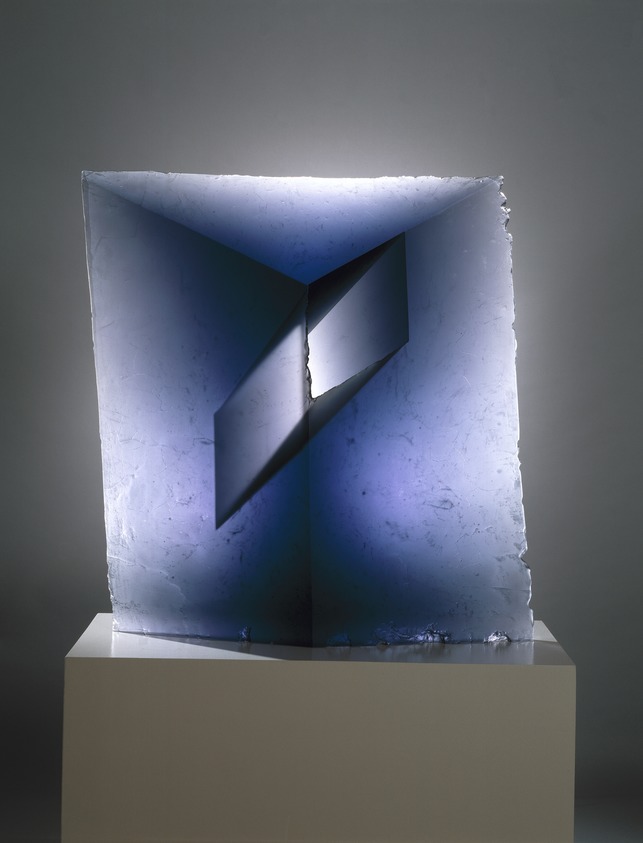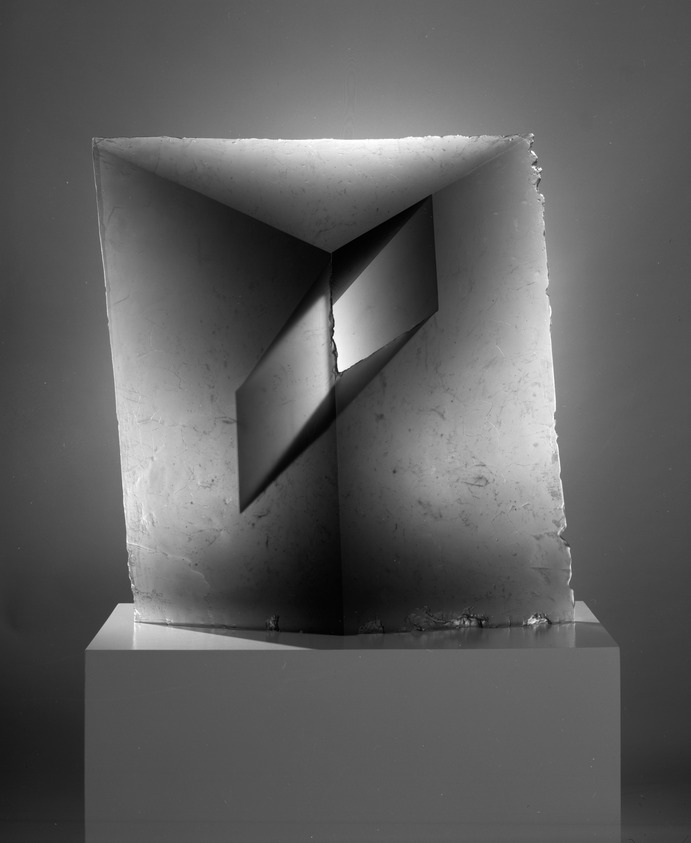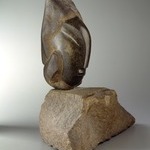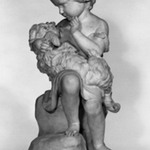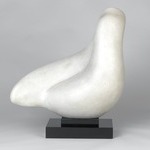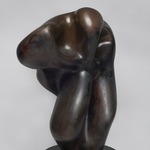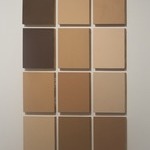Is this "broken" detail a part of the work or was this piece damaged by many years and transportation?
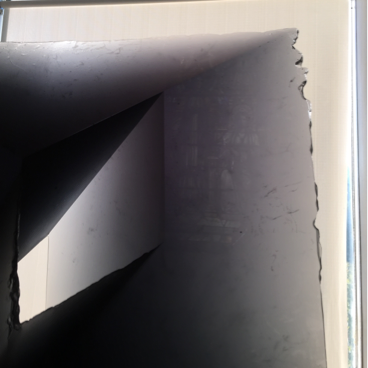
This is actually a fairly recent piece (dated 1991-92). This "broken edge" effect is definitely a part of many of their glass works. If you ever see other pieces by them, it is likely you will see the same sort of edge.
Wow!
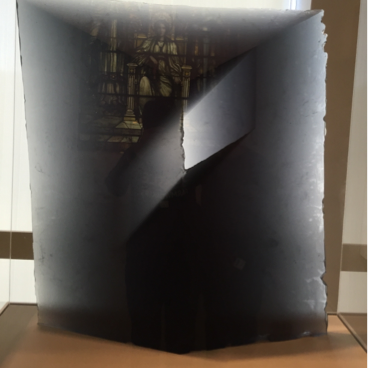
That work was a collaboration between a husband-and-wife team of artists, Stanislav Libensky and Jaroslava Brychtova. They are from the Czech Republic, a place with a long, rich history of glass art. I'm glad you're here on a sunny day so that you can see it naturally lit!
How did someone create that?

That's a fun piece! You should walk around it and see all the color changes. It was made by the "slump glass" method in which the glass is poured into a mold and then cut and polished once it had become solid.
It's cool how many colors come through!
Yep! The shape of the piece separates the white light from outside into the different colors.
Interesting!
How do they make a cut in glass like this?
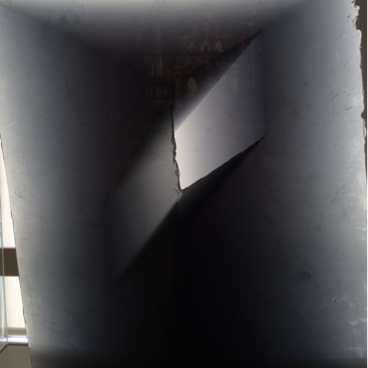
Great question! "Spaces II" by Stanislav Libensky and Jaroslava Brychtova,is an example of glass casting. The central rectangular opening was carved out of the cast glass.
Would you like to know a bit more about glass casting process? Most people are more familiar
with blown glass (you can see an example of glass blowing nearby in the Dale Chihuly work).
Would love to hear more about glass casting!
In glass casting an artist first sculpts a form in clay to their liking (this is known as a positive). From there, the artist then create a mold around the clay object (the positive) using ceramic,. Then the mold is cured and hardened. Next the artist separates the positive from the mold.
They then have a negative space within the mold. The mold is then filled with small pieces of glass (called frit) and then fired in a kiln.
The kiln heats up the small particles of glass and they fuse together and when it cools, the artist then has a glass version of the clay positive.
I absolutely love this! Can you tell me more. What does "cast glass" mean?
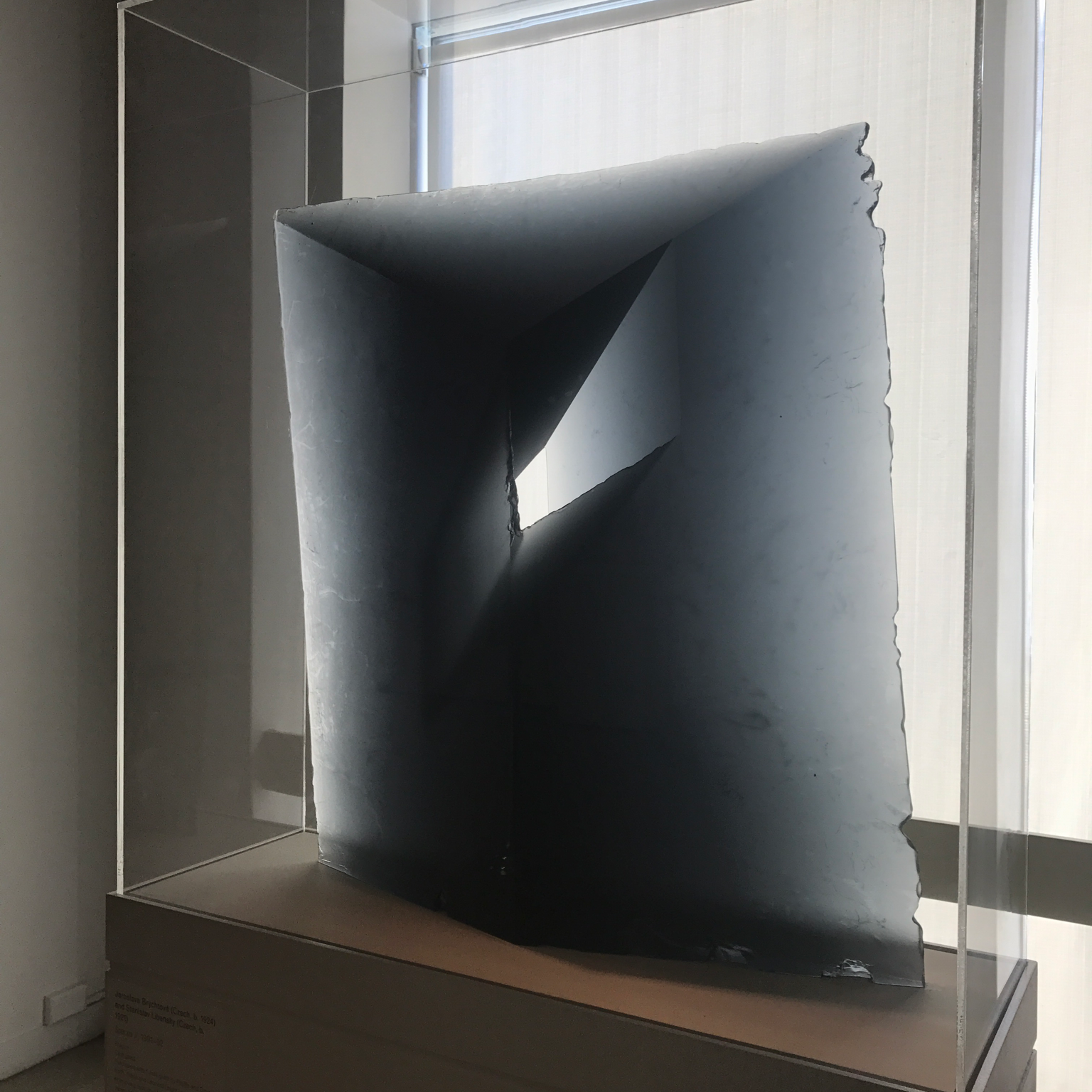
I love it too! Cast glass is made in a mold. Brychtova and Libensky collaboratively drew a design, made a model in clay, and from that created a plaster mold. Molten glass was then poured into the mold to form the shape you see here. If you look at the edges, they almost appear broken, but it's actually because molten glass, by nature, does not reach into all of the crevices of the mold.
Cool! And the hole in the middle, was that done after?
Nope, it’s also part of the mold! The two artists are from the Czech Republic, which has a long history of glass making. Here they are experimenting with how light affects glass.
Was this purchased from Heller gallery? I think I saw it there years ago.
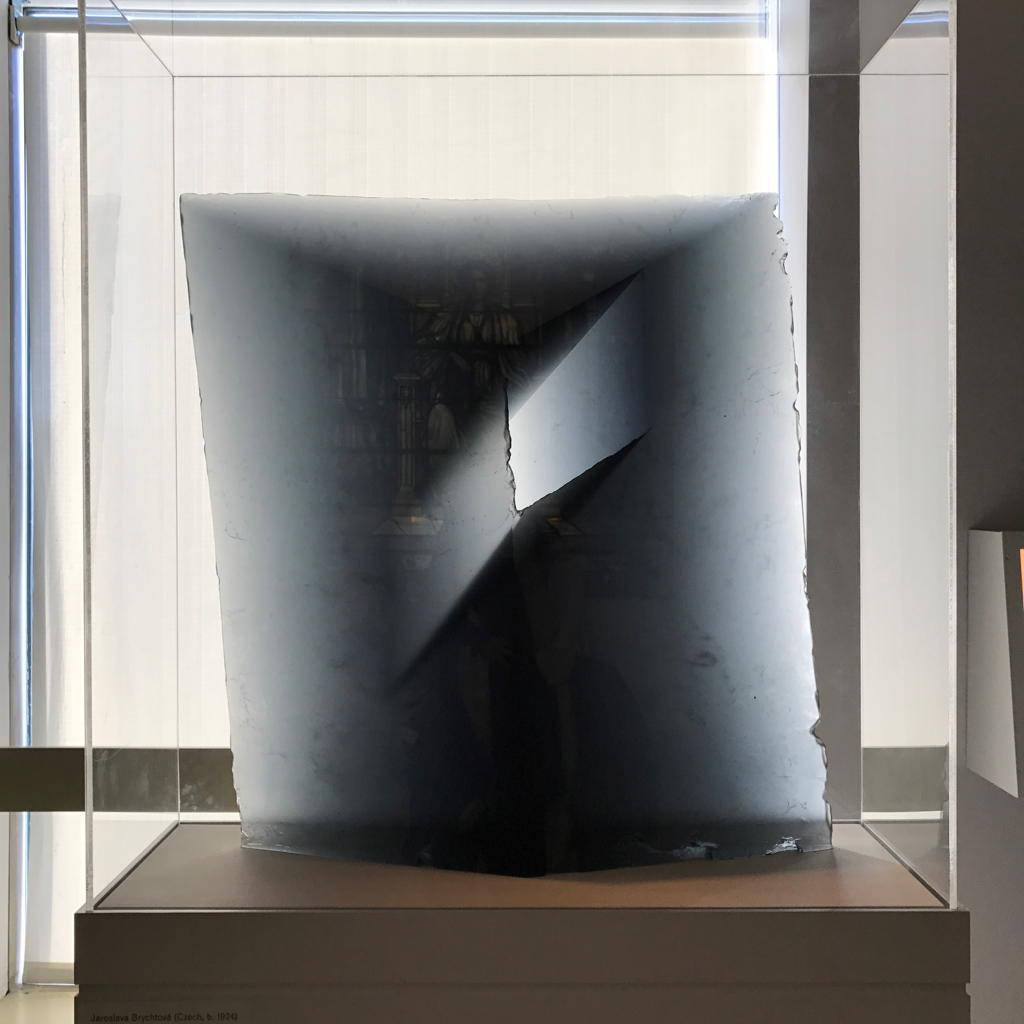
It's possible. Brychtova and Libensky do have a relationship with Heller, but many of their works have a similar look.
Ah, so it could be a different pice by the same artists?
Yes, this work was purchased for the Museum in 1993 within a year of being cast (if that triggers your memory at all).
Oh, certainly not the exact same piece then. So interesting, thanks again!
Tell me more!

Brychtova and Libensky are glass artists from the Czech Republic, a place with a long tradition of glass making! This work explores the play between glass and light. To make it, the artists produced a model in clay, then made a plaster mold into which they poured molten glass. If you look at the edges, they almost appear broken. This is because the molten glass did not reach all the crevices of the mold!
Is there a difference between cast glass and stained glass?

There is! Cast glass is literally cast in a mold. The sculpture is first sculpted in another material, like clay, then a mold is created from that initial sculpture and molten glass is poured in the mold to create the solid shape you see.
Stained glass actually incorporates a number of techniques although it is not cast into a large structure like this, but rather is formed into panes that puzzle together to form an image.
What is the purpose of this?
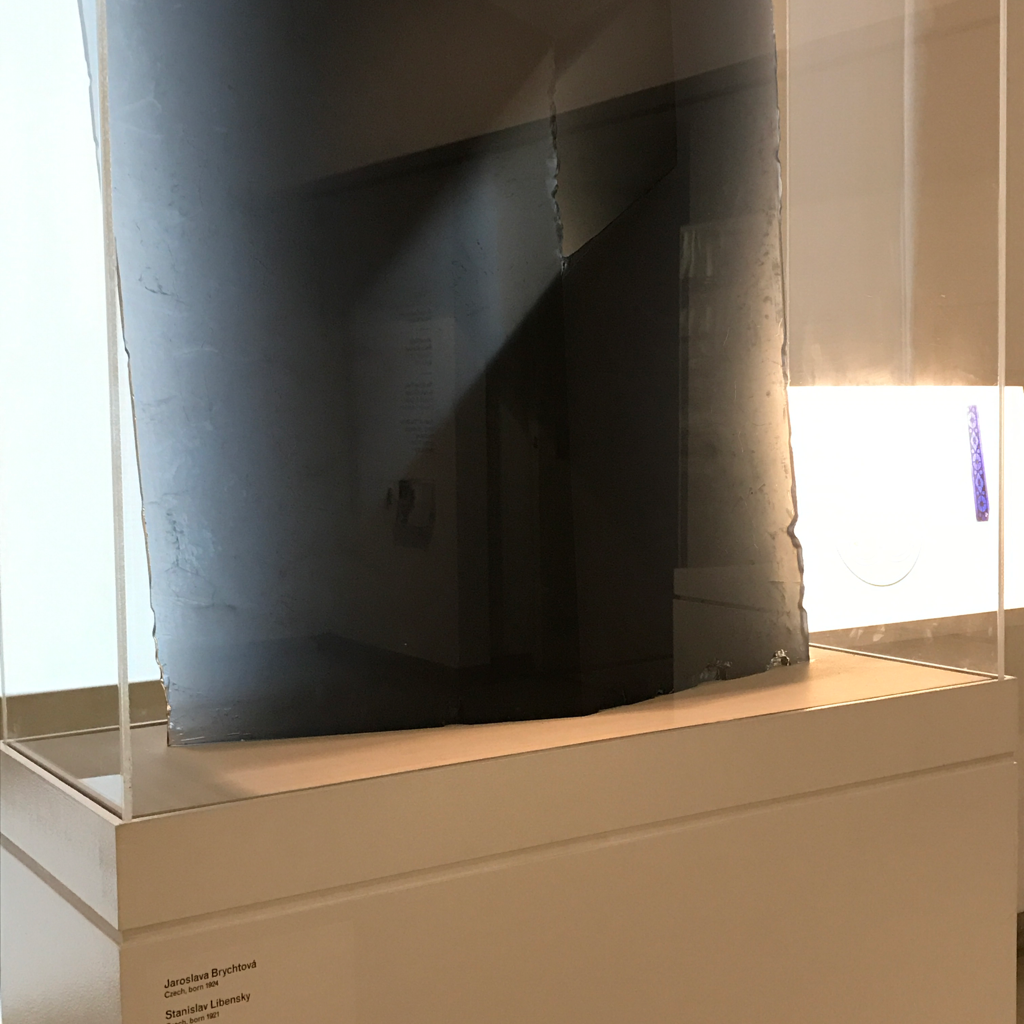
This sculpture is just that, a work of art. Jaroslava Brychtova and Stanislav Libensky are a Czech duo known for their abstract sculptures in glass.
One interesting aspect of this piece is that, if you look through it in the right light, the hole in the middle appears to go one forever. It is meant to appear as an infinite space.
Tell me more.
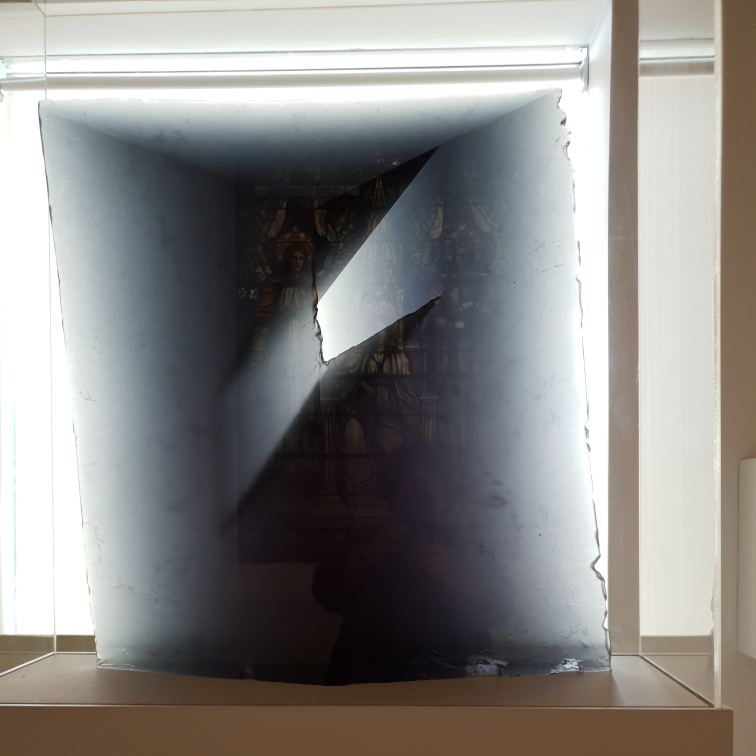
This glass sculpture is my colleague's favorite! Jaroslava Brychtova and Stanslav Libensky were trained in traditional glassworking techniques popular in the Czech Republic. This sculpture was created using a casting method.
Essentially, molten glass is poured into a mold, but glass, by nature, is too thick to completely fill fine corners like you see at the edges of this sculpture. Where it looks like it's broken is actually a result of the way it was made.
Thank you.
What’s this made of?

It is made of cast glass. That's a fun piece! You should walk around it and see all the color changes. It was made using the "slump glass" method in which the glass is poured into a mold and then cut and polished once it solidifies.
